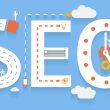Table of Contents Show
Are you an e-commerce site owner or marketing executive? You probably have a digital marketing plan in place. Have you been trying to squeeze the best out of your ads and posts? There are certain metrics that you need to understand to be able to optimize your different strategies for the best results. Here are some of the very important ones.

How much are you spending on acquisition?
To calculate your acquisition costs you need to determine the resources spent on getting a new customer. For a profit, your acquisition costs need to be controlled. You do not want to spend a hundred dollars to acquire a customer who will buy a product worth eighty dollars.
Controlling visitor traffic to ensure you are getting visitors who are likelier to buy is the fundamental of keeping acquisition costs in check. Less traffic which is more meaningful is much better than opening the floodgates.
Review your different platforms to see where the most customers are coming from. Are they Facebook visitors? Are you getting people from certain ads on Google? Are the review sites and referrals pushing customers your way?
Get the math of this data and then divide according to geographic location and then social demographic. You will be staring at some organized grids of info, some hot, some cold. Reduce the spending in the cold areas, focus on the high customer and potential growth areas.
Are you measuring your customer lifetime value?
The best customers are those who keep coming back. If you have identified repeat buyers, dig into the profiles and look for common trends. This information is priceless when you strategize and target future campaigns. Repeat customers also help you overcome your initial acquisition costs. If you spent a hundred dollars on getting an eighty dollar sale, but the customer comes back the next week and picks up something for sixty dollars, your acquisition costs dip back into the green.
Getting that Conversion Rate Up
You have probably spent time going through a retail website, whimsically browsing through the products and not end up buying anything. If this happens on a large scale, e-commerce websites end up spending their budget on high volume traffic but make no conversions. According to a Smart Insights report, the average conversion rate across all e-commerce segments is around 2.5%. If you are not getting this figure you may be trailing behind the competition. The report also shows that desktop conversions are higher than phone conversions. On the other hand, mobile e-commerce traffic is increasing faster than desktop.
Now what are the influencers when it comes to conversion rates? People who shop online are usually looking for a bargain, so high prices can be on the conversion deterrent list. A lack of social proof can also prevent visitors from making a purchase. Bad ad targeting can also harm conversion rates. You can end up having a very effective digital marketing strategy that is bringing in people interested in your products but ends up bleeding funds because the visitors are not buying. Is Conversion Rate Optimization Really Important for Your E-commerce? One would guess the answer is quite obvious now.
Conversion Basics
There are some quick adjustments that you can start doing to improve your conversion rates, or at least remove elements that drag them down. If you have a website that takes customer information in a form, keep the number of fields less. Make some optional so the visitor has more control. No one likes to fill up long forms and it can seem intrusive at times. See if you can improve your returns or refund policy â it adds an extra assurance for potential buyers. Call-to-action and testimonials are quite effective in getting people to make purchases.
Add more media showing the applications of your service or product. Videos with human beings (as opposed to charts or graphics) create a positive association. Make your social media presence visible on your e-commerce website. Buyers associate a high number of followers with a brand that can be trusted. Add customer reviews. Add recommendations for other products that are related to what the customer is searching for. It is a great conversion trick that uses the âpurchasing momentum’. Your search engine (PPC) ads need to accurately represent the landing page to ensure the customer sees what he or she is expecting. To sum it up, customer service makes a big difference.
Conversions complete the cycle of a successful marketing campaign. Digital marketing allows you a lot of data and tools to address conversion issues. Take charge now and grow your business.






